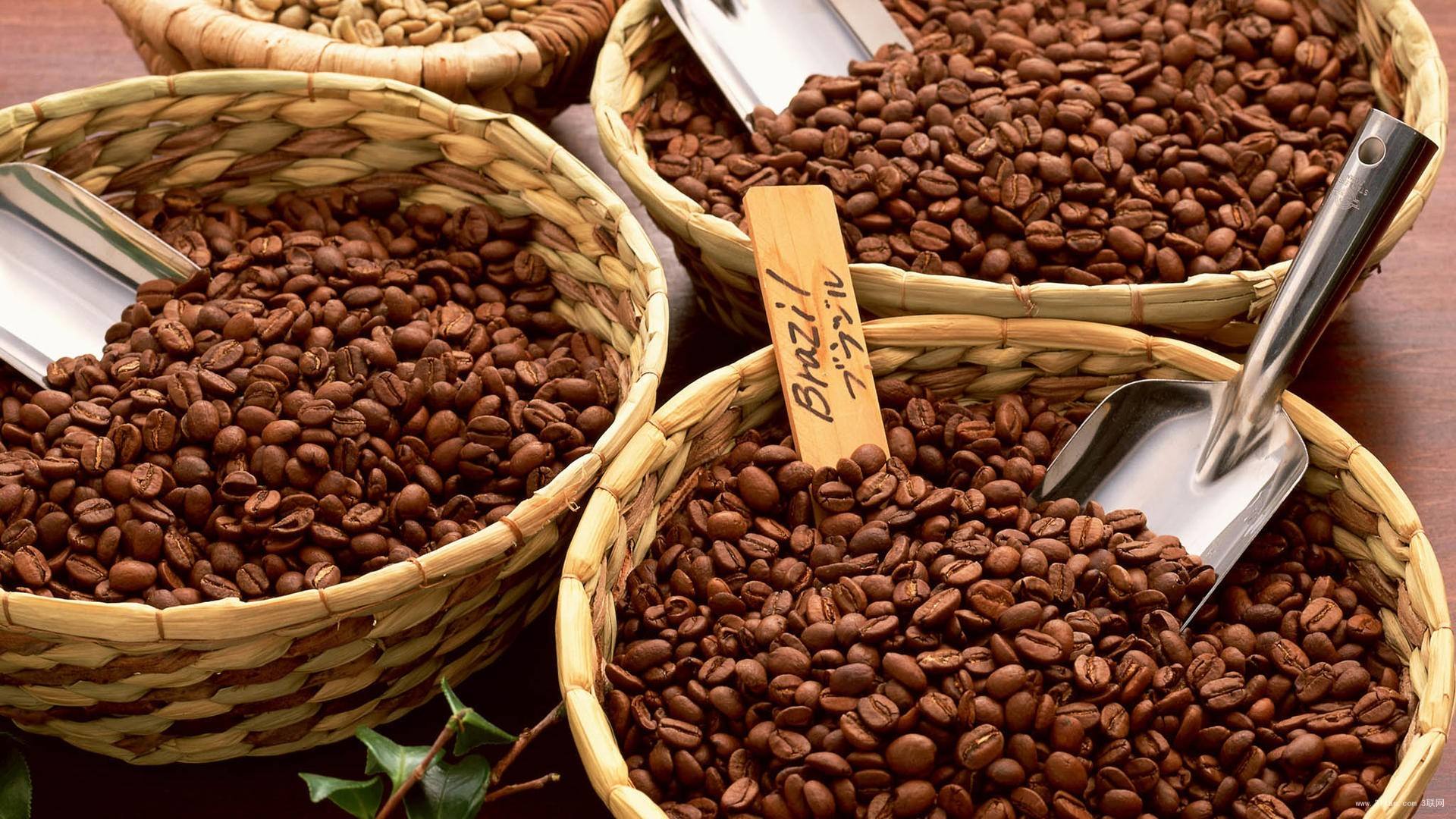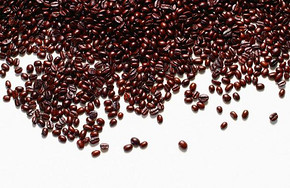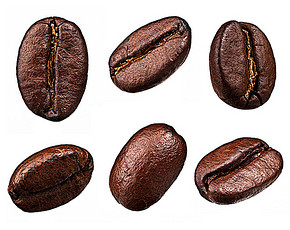The classification of Blue Mountain Coffee, how to distinguish between true and false Blue Mountain
Follow the caf é (Wechat official account vdailycom) and found that Beautiful Cafe opened a small shop of its own.
Blue mountain classification
Jamaica is one of the small coffee producers in the world, with an annual harvest of about 40000-60 kg / sack (Jamaican Blue Mountain coffee is actually shipped away in 70kg barrels, they are the last countries to still use this traditional packaging method, but their production is in 60kg/ sacks, as that is the international standard for measuring coffee production).
There are three grades of coffee in the Blue Mountains of Jamaica: blue Mountain Coffee (BlueMountainCoffee), Alpine Coffee (JamaicaHighMountasinSupremeCoffeeBeans) and Jamaican Coffee (JamaicaPrimeCoffeeBeans). Among them, Blue Mountain Coffee and Alpine Coffee are each divided into two grades. In terms of quality, the order from top to bottom is: blue Mountain 1, Blue Mountain 2, Gaoshan 1, Gaoshan 2, Jamaican Coffee. Coffee grown up to 1600 meters above sea level is usually called Blue Mountain Coffee. Coffee grown between 274m and 457m above sea level is often called JamaicaPrimeCoffeeBeans, and the price of blue mountain coffee is several times higher than that of alpine coffee. It is mainly distributed in 5 peaks such as JohnCrow,St.John'sPeak,Mossman'sPeak,HighPeak,BlueMountianPeak.

Identify the true and false Blue Mountains
1 shape: the raw beans of Blue Mountain Coffee are cyan, neat in appearance, medium in size and slightly warped at both ends. After baking, the volume increases a lot, very full.
2 grinding beans: the real blue mountain coffee beans grow at high altitude, its cytoplasmic structure is relatively loose, it feels very crisp, cool and continuous when grinding by hand, and there is no feeling of resistance.
3 aroma: the aroma is very rich and dense; the so-called blended Blue Mountain Coffee does not have this aroma.
4 Taste: the real Blue Mountain Coffee has a balanced and full-bodied taste, without any feeling of prominence or lack of taste, which is unmatched by any other coffee beans, and the most critical identification point. The aroma of blue mountain peas is more subtle and the taste is relatively stronger.
5 feeling: blue Mountain Coffee, as the best coffee in the world, has classic balanced characteristics, and it is inevitable to have some subconscious and indescribable satisfaction when tasting it.
The coffee in the cup tastes very clean, and it is one of the sweetest coffee in the world. This taste has been described by JimReynolds in Peet Coffee and Tea: "the best example of Jamaican Blue Mountain Coffee is that it is fragrant, smooth and strong, and it makes me feel like a gem. It is as precious as a gem. It's complex, but very mild, it's sweet, it's very mellow. You have to taste it in order to know what I'm talking about. Unique growth conditions, and in all the production process are very careful, making Jamaica Blue Mountain Coffee very famous.
The "secret" of the pure taste of Blue Mountain Coffee
The real Blue Mountain Coffee is one of the most advantageous coffee growing conditions in the world. The weather, geological structure and topography of Jamaica provide a unique ideal place. Designated Jamaican Blue Mountain Coffee can only be grown in the Blue Mountain area, in Kingston, Jamaica is in the eastern north of the island. Moreover, the mountain is very uneven, and the process of harvesting is very difficult (the coffee harvester is almost entirely female). The tree is mainly small grain "GeishaHighBred" type. In the steep and high-altitude mountains, careful farming and harvesting, all Jamaican Blue Mountain coffee is ground, tasted and distributed by the Jamaican Industry Association.
Their coffee trees are on rugged hillsides, and the picking process is so difficult that non-local skilled female workers are simply unable to do it. It is very important to choose the right ripe coffee beans when picking. Immaturity or ripeness will affect the quality of the coffee. The picked coffee beans are shelled on the same day, and then let them ferment for 18 hours. After that, the coffee beans were cleaned and screened. The subsequent process is to dry, which must be carried out on the cement floor or on a thick blanket until the humidity of the coffee beans drops to 12% 14%. And then store it in a special warehouse. Take it out and roast when needed, then grind it into powder. These procedures must be strictly mastered, otherwise, the quality of coffee will be affected.
The Jamaican Coffee Industry Committee was established by the Government of Jamaica in 1950 to develop quality standards for Jamaican coffee and to monitor the implementation of quality standards to ensure the quality of Jamaican coffee. The Commission awarded special official seals to raw and roasted coffee exported from Jamaica, which is the highest-level national coffee institution in the world. At present, there are six kinds of marks that can represent the origin of Blue Mountain Coffee, such as Mafis River Embankment Central Factory (M.B.C.E), Blue Mountain Coffee Cooperative Factory (M.H.C.C.T.), Portland Blue Mountain Coffee Cooperative Factory (P.X.X.S.H.), Coffee Industry Association (Wallenford), Coffee Industry Association (St. John's Peak) and J.A.S.
By 1969, the situation had improved because the use of Japanese loans had improved the quality of production, thus ensuring the market. By now, this kind of coffee has reached the point of being feverishly loved.
By 1981, about 1500 hectares of land in Jamaica had been reclaimed for coffee cultivation, followed by investment in another 6000 hectares of coffee land. In fact, today's Blue Mountain area is a small area with a planting area of only 6000 hectares, and it is impossible to grow all the coffee marked "Blue Mountain" there. Another 12000 hectares are used to grow two other types of coffee: Alpine Top Coffee and Jamaican Superior Coffee. As Japan has always invested in the Jamaican coffee industry, most of the Blue Mountain Coffee is now owned by the Japanese, and they have also obtained the right of priority to buy Blue Mountain Coffee. In 1992, Jamaica sold 688 tons of Blue Mountain coffee to Japan, 75 tons to the United States and 59 tons to Britain. Now, 90% of Blue Mountain coffee is bought by the Japanese. Now that the rest of the world can only get 10% of Blue Mountain, Blue Mountain coffee is always in short supply, regardless of the price.
Jamaica, the origin of Blue Mountain Coffee, gets its name from the Blue Mountains surrounded by the Caribbean Sea. Sour, sweet, bitter taste are very harmonious and have excellent flavor and aroma, suitable for individual coffee, suitable for moderate roasting.
The Blue Mountains are located in the eastern part of the island of Jamaica, hence its name because it is surrounded by the Caribbean Sea. On clear days, the sun shines directly on the blue sea, and the peaks reflect the bright blue light of the sea. The highest peak of the Blue Mountains, which is 2256 meters above sea level, is the highest peak in the Caribbean and a famous tourist attraction. Located in the coffee belt, with fertile volcanic soil, fresh air, no pollution, humid climate, foggy and rainy all the year round (the average precipitation is 1980 mm, the temperature is around 27 degrees), such a climate has created the world-famous Jamaican Blue Mountain Coffee. It also creates the highest price coffee in the world. no, no, no. This kind of coffee has the characteristics of all good coffee, not only full-bodied and mellow, but also because of the perfect combination of sweet, sour and bitter coffee, it has no bitter taste at all, only a moderate and perfect sour taste. It is generally drunk on a single product, but because the output is very small and the price is extremely expensive, it is generally made with coffee with a similar taste on the market.
Important Notice :
前街咖啡 FrontStreet Coffee has moved to new addredd:
FrontStreet Coffee Address: 315,Donghua East Road,GuangZhou
Tel:020 38364473
- Prev

How much do you know about the coffee producing areas in Ethiopia?
Following caf é (Wechat official account vdailycom) found that Beautiful Cafe opened a small shop of its own. What else is there besides Yega Xuefei, the coffee producing area of Ethiopia? Ethiopia, an ancient country on the African continent, is the hometown of Arabica coffee. It is in the forests of the Kaffa region that you can see wild Arabica coffee. Coffee is in Ethiopia.
- Next

Jamaican coffee is mainly divided into three categories and grading standards.
Following caf é comments (Wechat official account vdailycom) found that Beautiful Cafe opened a small shop of its own. Jamaican coffee is mainly divided into three categories: blue Mountain Coffee (Blue Mountain Coffee) Alpine Top Coffee (Jamaica High Mountain Supreme Coffee Beans) Jamaican High quality washed Coffee (Jamaica Prime washed) Blue Mountain and Alpine Top Coffee trademarks
Related
- Detailed explanation of Jadeite planting Land in Panamanian Jadeite Manor introduction to the grading system of Jadeite competitive bidding, Red bid, Green bid and Rose Summer
- Story of Coffee planting in Brenka region of Costa Rica Stonehenge Manor anaerobic heavy honey treatment of flavor mouth
- What's on the barrel of Blue Mountain Coffee beans?
- Can American coffee also pull flowers? How to use hot American style to pull out a good-looking pattern?
- Can you make a cold extract with coffee beans? What is the right proportion for cold-extracted coffee formula?
- Indonesian PWN Gold Mandrine Coffee Origin Features Flavor How to Chong? Mandolin coffee is American.
- A brief introduction to the flavor characteristics of Brazilian yellow bourbon coffee beans
- What is the effect of different water quality on the flavor of cold-extracted coffee? What kind of water is best for brewing coffee?
- Why do you think of Rose Summer whenever you mention Panamanian coffee?
- Introduction to the characteristics of authentic blue mountain coffee bean producing areas? What is the CIB Coffee Authority in Jamaica?

